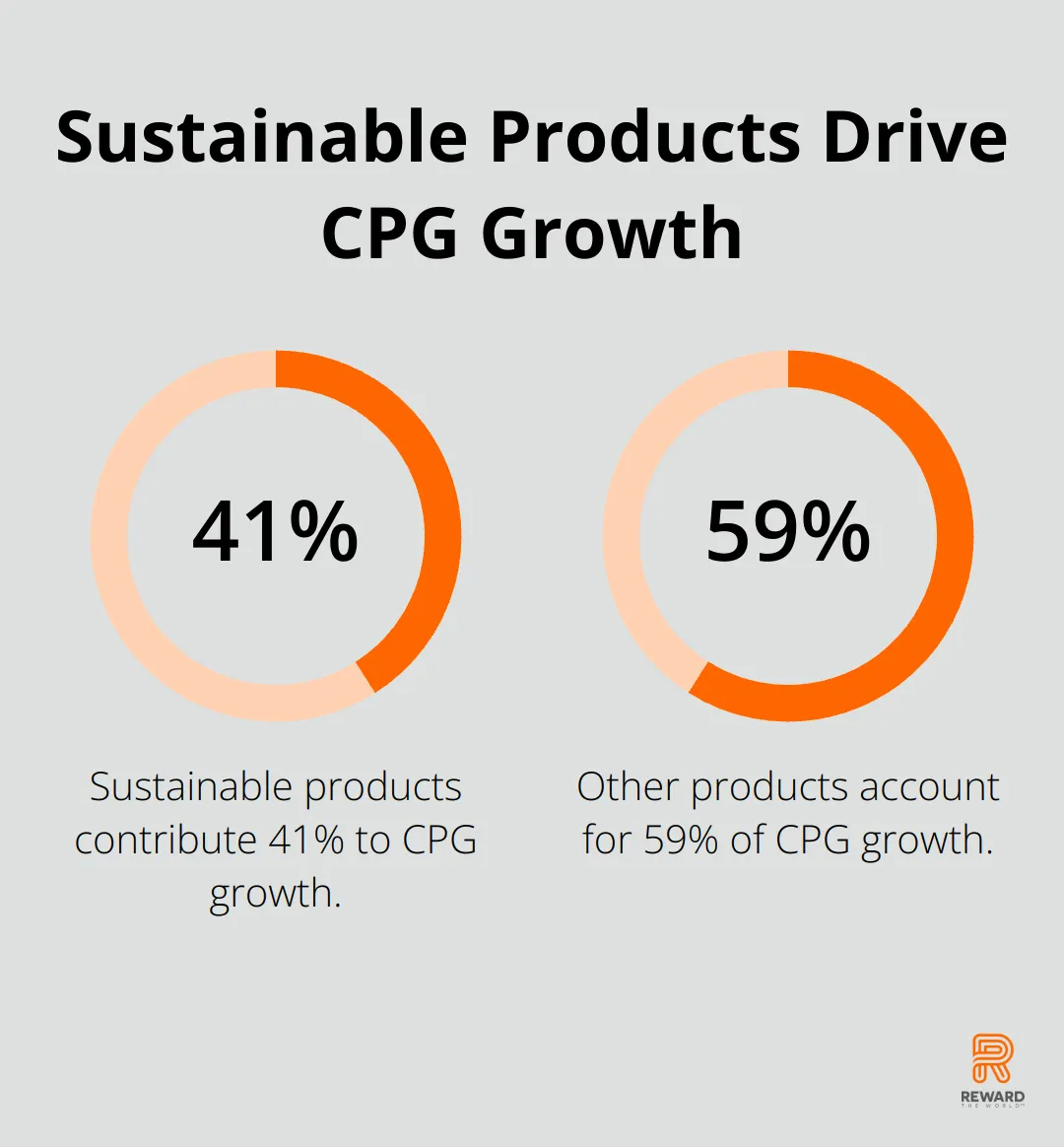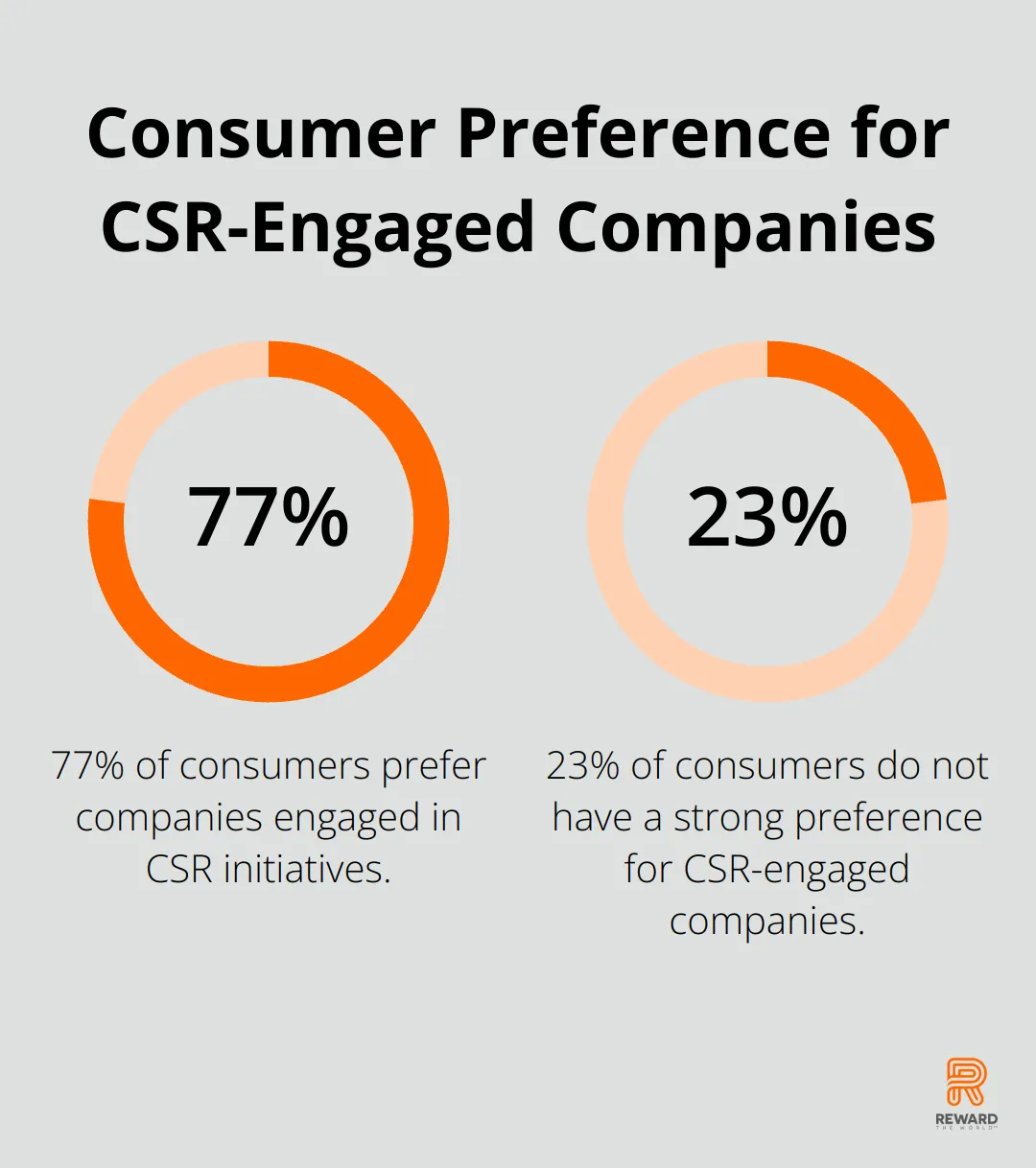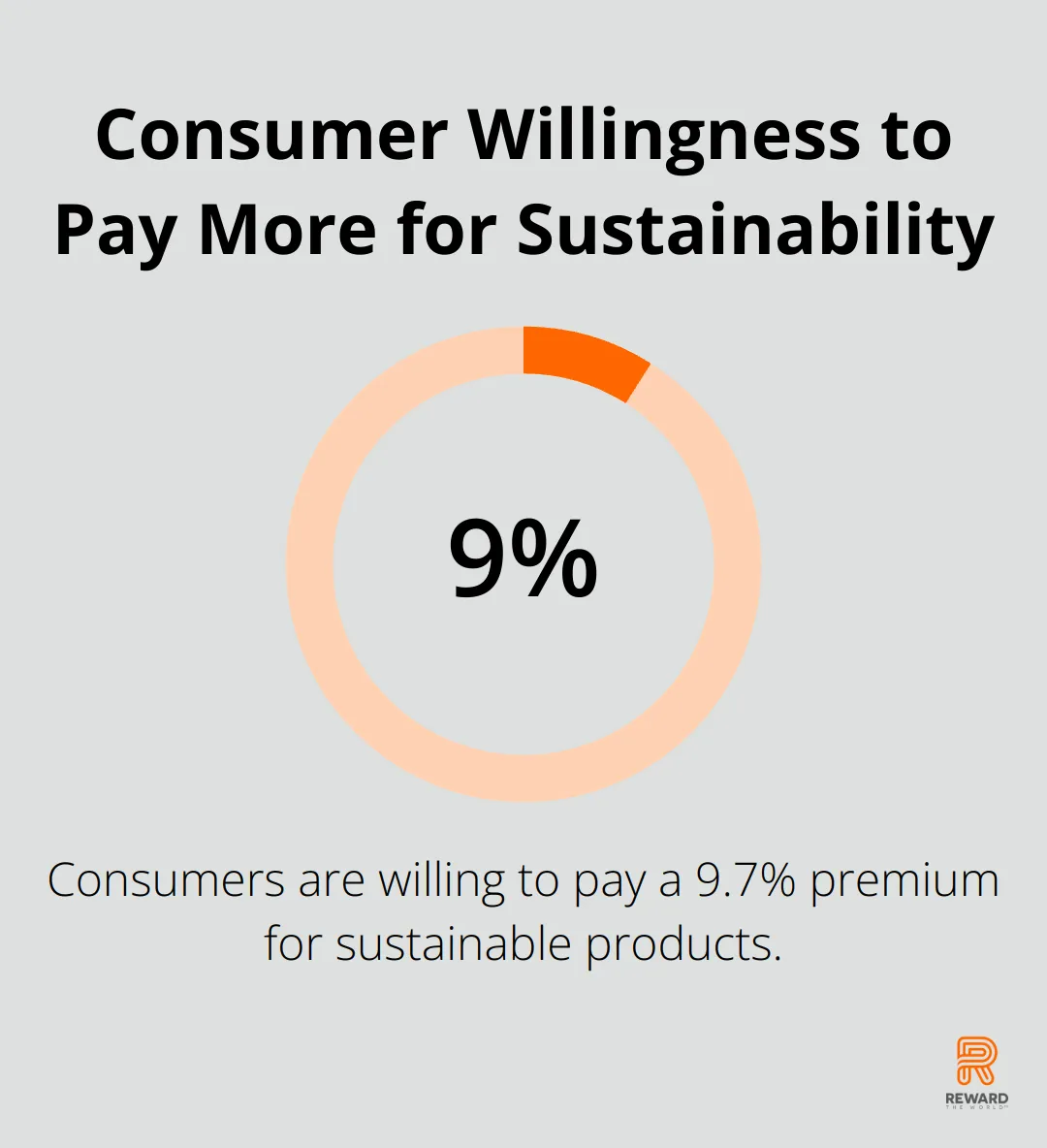
In today’s eco-conscious market, businesses face a unique challenge: how to attract and retain customers while also demonstrating environmental responsibility. Sustainable rewards have emerged as a powerful solution to this dilemma.
At Reward the World, we’ve seen firsthand how green incentives can transform customer loyalty programs and elevate brand image. This blog post explores the impact of eco-friendly rewards on consumer behavior and business success.
The Green Consumer Revolution: Reshaping Market Dynamics
A Fundamental Shift in Consumer Values
The landscape of consumer behavior has undergone a seismic shift in recent years. Environmental consciousness has moved from the fringes to the mainstream, reshaping how people shop and interact with brands. This transformation isn’t just a passing trend; it represents a fundamental change in consumer values that’s here to stay.
The Numbers Speak Volumes
A joint study from McKinsey & Company and NIQ examines sales growth for products that claim to be environmentally and socially responsible. This underscores the growing eco-awareness among shoppers.
But it’s not just about intentions. The 2024 Sustainable Market Share Index™ finds that products marketed as sustainable are responsible for 41% of the growth in consumer packaged goods (CPGs). This data clearly shows that consumers put their money where their values are.

From Awareness to Concrete Actions
This heightened awareness translates into tangible actions. A survey by First Insight revealed that 62% of Generation Z prefer to buy from sustainable brands, and 73% of Millennia ns are willing to pay more for eco-friendly products. Even more telling, a global survey in 2025 found that 77% of consumers prefer to buy from companies that actively engage in CSR initiatives.
The New Brand Loyalty Equation
Brand loyalty no longer revolves solely around quality and price. A study by Edelman found that 64% of consumers choose, switch, avoid or boycott a brand based on its stand on societal issues. Environmental responsibility has become a key factor in this decision-making process.
Companies that ignore this shift do so at their peril. A report from Unilever showed that a third of consumers now choose to buy from brands they believe are doing social or environmental good. This translates directly to the bottom line – Unilever’s sustainable living brands grew 69% faster than the rest of its business.
The Green Opportunity
The message rings clear: businesses that align with consumers’ environmental values aren’t just doing good – they set themselves up for long-term success. The rise of the eco-conscious consumer presents not just a challenge, but an opportunity for brands to reinvent themselves and forge deeper, more meaningful connections with their customers.
As we move forward, it becomes evident that green incentives play a pivotal role in this new landscape. These eco-friendly rewards not only appeal to the values of modern consumers but also offer a unique way for businesses to demonstrate their commitment to sustainability. Let’s explore how these green incentives can boost both loyalty and brand image in our next section.
How Green Incentives Benefit Everyone
Revolutionizing Customer Loyalty and Brand Image
Green incentives transform the approach businesses take to customer loyalty and brand image. These eco-friendly rewards programs offer tangible benefits to environmentally conscious consumers while companies demonstrate their commitment to sustainability.
Green incentives are rewards or bonuses given to customers for making environmentally friendly choices. These range from points for recycling products to discounts for choosing sustainable packaging options. H&M’s garment collection program, for example, offers vouchers to customers who bring in old clothes for recycling (regardless of the brand).
Resonating with Modern Consumer Values
Green incentives strike a chord with today’s environmentally aware consumers. In 2024, consumers are expected to reach for products on store shelves that promote both physical and mental wellbeing, with a growing focus on cleaner eating. Businesses that offer green rewards tap into this sentiment, creating a stronger emotional connection with their customer base.
Patagonia’s Worn Wear program exemplifies this approach. Customers can trade in their used Patagonia gear for store credit, which encourages recycling and reduces waste. This initiative aligns with the brand’s environmental ethos and fosters customer loyalty by rewarding sustainable behavior.
Measurable Business Benefits
The advantages of green incentives for businesses extend beyond customer goodwill. A 2025 study by the Harvard Business Review explored the strategic importance of sustainability in business.
Green incentives can also lead to cost savings. Starbucks’ reusable cup program offers a small discount to customers who bring their own cups. This has helped the company save on disposable cup costs while reducing waste.
Boosting Brand Reputation
Green incentives significantly enhance brand image. Companies that implement green incentives visibly demonstrate their commitment to sustainability, enhancing their reputation among consumers and stakeholders alike.
The Power of Eco-Friendly Rewards
Businesses that implement green incentives see benefits in customer engagement and repeat purchases. These figures underscore the powerful impact of aligning rewards with environmental values.
Green incentives represent a strategy that benefits both consumers and businesses while contributing to broader environmental goals. The integration of these eco-friendly rewards into loyalty programs will likely become not just a trend, but a necessity for businesses looking to thrive in an increasingly environmentally conscious market.

The next section will explore how companies can effectively implement these green incentive programs to maximize their impact.
How to Create Impactful Green Incentive Programs
Select Meaningful Eco-Friendly Rewards
The success of a green incentive program depends on choosing rewards that resonate with your target audience. A 2024 PwC survey found that consumers are willing to spend an average of 9.7% more on sustainably produced or sourced goods, even as cost-of-living and inflationary concerns weigh. These rewards can include partnerships with tree-planting organizations, carbon offset credits, or eco-friendly products.

Outdoor retailer REI exemplifies this approach with its membership program. Customers can allocate a portion of their dividends to environmental causes, which not only rewards them but also amplifies the positive impact of their purchases.
Integrate Seamlessly with Existing Loyalty Programs
You don’t need to overhaul your current loyalty program to incorporate green incentives. Start by introducing eco-friendly options alongside traditional rewards. Empirical studies indicate that loyalty program participation has implications for higher customer retention, longer customer lifetimes, and biased attitudes.
Try offering bonus points for eco-friendly actions (such as opting for paperless statements or choosing sustainable shipping options). Sephora’s Beauty Insider program allows members to redeem points for donations to environmental charities, effectively blending traditional beauty rewards with green initiatives.
Measure and Communicate Impact
Transparency plays a vital role in green incentives. Customers want to see the real-world impact of their choices. Implement clear metrics to track the environmental benefits of your program. These metrics can include tons of CO2 offset, number of trees planted, or pounds of waste diverted from landfills.
Provide regular updates on these impacts through personalized communications, social media, and your website. Timberland’s sustainability platform showcases real-time data on the company’s environmental progress, including trees planted and recycled materials used in production.
Ensure Authenticity and Alignment with Brand Values
The effectiveness of your green incentive program hinges on its authenticity and alignment with your brand values. Carefully select rewards that reflect your company’s commitment to sustainability. This approach will resonate more strongly with your customers and reinforce your brand’s eco-friendly image.
Leverage Technology for Enhanced Engagement
Utilize technology to make your green incentive program more engaging and accessible. Mobile apps, for instance, can allow customers to track their eco-friendly actions and rewards in real-time. Gamification elements can further incentivize participation and make the experience more enjoyable for users.
Reward the World offers a comprehensive platform that can help businesses implement and manage these green incentive programs effectively, ensuring maximum engagement and impact.
Final Thoughts
Green incentives have become a powerful tool for businesses to boost customer loyalty and enhance brand image. Companies that offer sustainable rewards tap into the growing eco-consciousness of consumers while demonstrating their commitment to environmental responsibility. Data shows that customers increasingly make purchasing decisions based on a brand’s sustainability efforts, and green incentives provide a tangible way to meet these expectations.
Eco-friendly loyalty programs will become standard practice rather than an exception in the future. Businesses that fail to incorporate sustainability into their reward strategies risk falling behind in an increasingly competitive market. The most successful programs will integrate green incentives with existing loyalty structures, offer meaningful rewards, and effectively communicate the real-world benefits of customer participation.
Reward the World understands the complexities of implementing effective green incentive programs. Our platform offers a comprehensive solution for businesses looking to enhance their sustainability efforts through customer rewards. We provide the tools necessary to create engaging and impactful sustainable rewards programs, helping to drive customer engagement and boost brand performance in an environmentally conscious manner.
